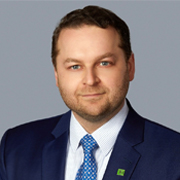July FOMC Preview: New Fed Call
By: Oscar Muñoz, Gennadiy Goldberg
Jul. 15, 2023 - 6 minutes
Payrolls Seal the Deal
The firm June payrolls report (1) sealed the deal. While the employment measure slowed down more than expected in June, the absolute number and an unemployment rate that remains close to historical lows are still likely to make the Fed uneasy. All told, given the accumulation of broadly firmer-than-expected activity over the past few weeks and the Fed's clear inclination to hike again, we are now looking for a 25bp rate increase in the Fed funds target range to 5.25%-5.50% at the July FOMC meeting.
Our view post-June FOMC was that the Fed had likely ended its tightening cycle back in May following its still confusing decision to pause in the last meeting (despite still notably strong macro data), and particularly given our expectation for the easing of consumer prices in the interim before the July FOMC meeting (May PCE and June CPI). The slowing in the PCE data came to fruition, and we continue to expect core CPI inflation to register its smallest m/m gain since 2021 when the June data is released.
Not Good Enough
The Fed seems to prefer to accumulate additional evidence on the easing of underlying price pressures before calling for the end of the tightening cycle — something we continue to anticipate will happen this summer. Fed officials have also made clear that given the rapid accumulation of rate increases over this cycle, they can now afford to be more patient in tightening policy. According to the June FOMC minutes, "leaving the target range unchanged... would allow them more time to assess the economy's progress toward the Committee's goals."
The decision to pause in June also goes in hand with the lingering uncertainty regarding the lags between policy tightening and the subsequent impact on the economy. This is a view that was broadly shared by the Committee: "Participants generally noted a high degree of uncertainty regarding the cumulative effects on the economy from both already-enacted monetary policy tightening and the potential additional tightening in credit conditions… the full effects of monetary tightening had likely yet to be observed..."
We believe the Fed's clear inclination to slow down the pace of rate hikes (from 75bp to 50bp to 25bp, to pausing in June) will set the stage for a pause again after July. While Fed officials are likely to maintain the bias for additional tightening, the combination of clearly softening underlying inflation and gradually easing labor-market conditions will allow the Fed to extend a pause after September. With that said, we can't fully discard the possibility that the Fed pushes through an additional rate increase, particularly toward the end of the year if the economy fails to lose sufficient speed by then.
In our view, as inflation loses momentum over the summer, the monetary policy stance will become ever tighter in real terms, and the Fed might feel that it has done enough on the policy front to afford to wait for the full impact from a more restrictive stance to kick in (even if the labor market stays somewhat resilient). Indeed, we judge that the policy stance truly became biting only toward the end of last year and the full effect of tightening has yet to be transmitted. This is a view shared by Fed Chair Powell recently and more explicitly expressed by Atlanta Fed president Bostic in a recent post. (2)
New Policy Path and Recession Call
All told, we expect the July rate increase to 5.25%-5.50% to be the final hike in this cycle. However, we acknowledge there's a lingering bias toward additional policy tightening if the data does not evolve as we anticipate.
The recent firmer evolution of the economy (the labor market in particular) has also led us to move our recession call from Q4 this year to Q1 2024. We still view a recession as the most likely scenario within our forecast horizon. Given our new expectation for a downturn in the economy, we now look for the Fed to implement its first rate cut in March 2024 (we initially expected that to happen in Dec 2023). We maintain our view that the Fed will need to reduce rates at a much faster pace than currently expected by market participants, who seem to be anticipating a soft landing as the most probable outcome. We now project the Fed funds target range to end 2024 at 2.25%-2.50%.
Rates Implications: Ain't No Stoppin' Us Now
We think the repricing has been a function of stronger economic data, with the market repricing both hikes (this year) and cuts (next year) significantly. Investors are now penciling in a 5.43% terminal rate and are pricing in the first rate cut all the way in May 2024. For the rates market, the sharp repricing in rate cut expectations has moved the needle the most, with markets now looking for a soft landing.
Investors are now looking for just 100bp of cuts in 2024 — the same as the Fed's median projection and a sharp decline from 160bp just a few months ago. The trough rate in Fed funds has also been pushed back to 2026/2027, with the market increasing the pricing for the end-2025 Fed funds rate to 3.8% from 3.3%. While we expect the Fed to hike rates in July and believe they will play September and November hikes by ear, we believe the market is sharply underpricing the potential for deeper cuts in 2024. The longer the Fed keeps real rates elevated at high levels, the more likely a hard landing becomes.
Given our expectation for growth and inflation to slow in the next several months and the Fed to hike just once more, we have revised our Treasury forecasts. We hold the following views:
- Duration: We expect yields to remain elevated for the time being but look for 10y yields to finish the year at 3.25%.
- Curve: The curve is likely to remain deeply inverted as the Fed threatens more hikes later this year. We expect gradual steepening in Q4 and more dramatic steepening in Q1 2024 when we expect the first cut.
- TIPS: The move higher in rates since the U.S. banking crisis earlier this year has been driven entirely by real rates, with 5-10y real rates trading near the highest levels since the 2008 financial crisis. However, it will take a strong catalyst to reverse the upward momentum in rates, and ongoing outflows from TIPS funds could make it difficult for real rates to move lower.
Subscribing Clients can access full reports including July FOMC Preview: New Fed Call on the TD Securities Market Alpha Portal








